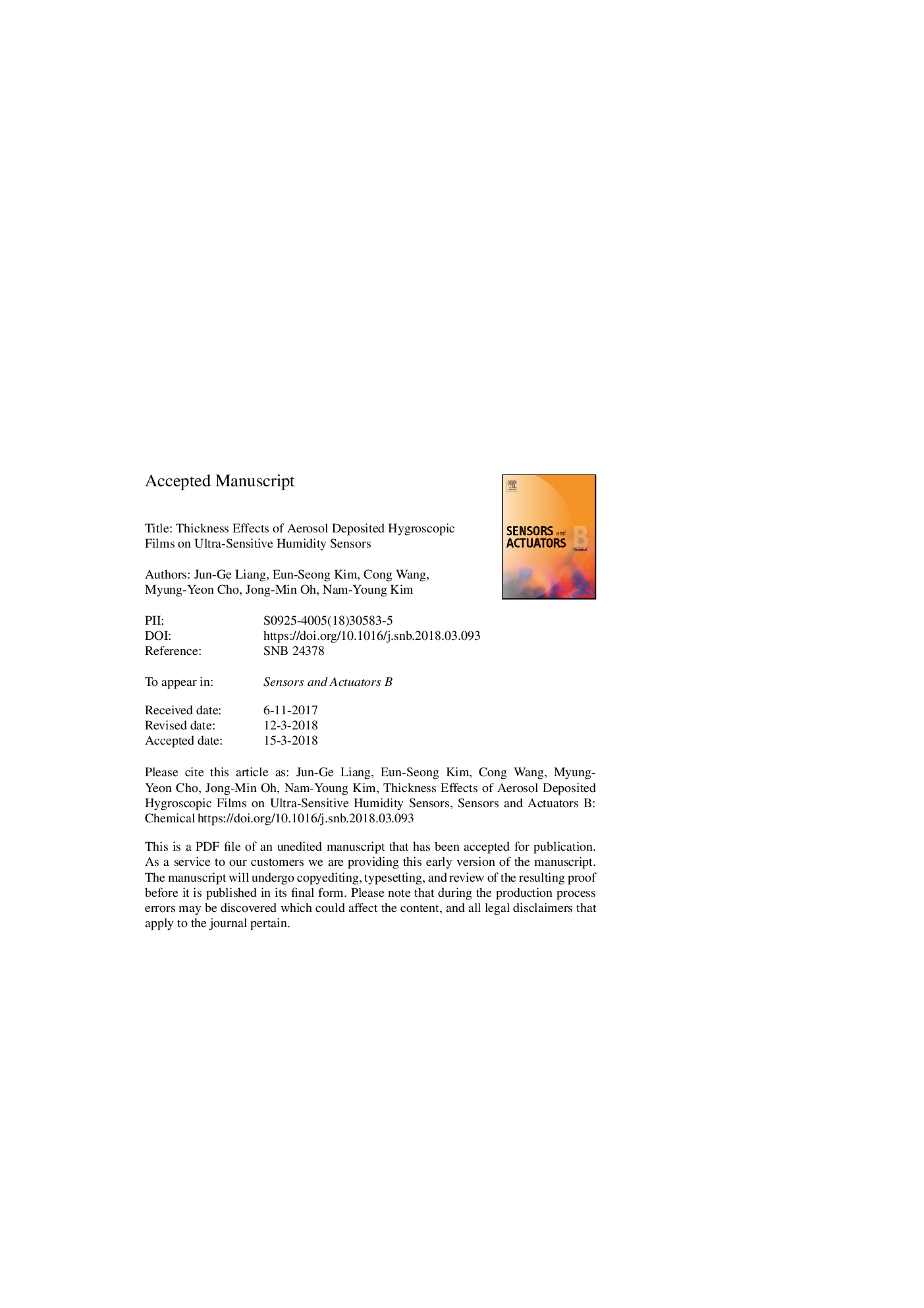| Article ID | Journal | Published Year | Pages | File Type |
|---|---|---|---|---|
| 7140136 | Sensors and Actuators B: Chemical | 2018 | 43 Pages |
Abstract
Hygroscopic film that has a super mesoporous structure exhibits high sensitivity and fast response/recovery in humidity sensing applications. Aerosol deposition (AD) via a shock-loading-solidification preparation mechanism, which is an unexplored potential hygroscopic film preparation technique, can produce a porous microstructure, and the AD hammering effect creates various interior and surface microstructures in different-thickness films. The objective of our study was to verify the feasibility of using AD as a humidity-sensing film preparation technique, and to investigate the thickness effects of the film on its microstructure and hygroscopic properties. Hygroscopic films with thicknesses ranging from 0.1-10.0â¯Î¼m were aerosol deposited with BaTiO3 powders before undergoing a 400â¯Â°C thermal treatment. The resulting surface morphology exhibited roughness increases for thicknesses from 0.1-6.0â¯Î¼m, and a decrease at 10.0â¯Î¼m. The cross-sectional structure was characterized by a transitional-density grain distribution in which higher density small-sized grains could be seen in the bottom layer. Films with thicknesses of 1.5â¯Î¼m and 3.0â¯Î¼m achieved excellent sensitivities of 178.6â¯Â±â¯7.3 pF/%RH and 299.9â¯Â±â¯5.4 pF/%RH, respectively. Further, the response and recovery time for the 1.5â¯Î¼m film were both less than 5â¯s. The current study determined the feasibility of AD-based humidity-sensing film preparation and provided a reference for optimal thickness control. The surface hydrophilicity, pore volume, and open-pore ratio were analyzed as critical factors of the thickness related humidity sensing effects, and physical modeling indicated that AD-prepared films exhibited an expanded humidity detection range, enhanced water vapor adsorption and desorption, and improved sensitivity to humidity.
Related Topics
Physical Sciences and Engineering
Chemistry
Analytical Chemistry
Authors
Jun-Ge Liang, Eun-Seong Kim, Cong Wang, Myung-Yeon Cho, Jong-Min Oh, Nam-Young Kim,
